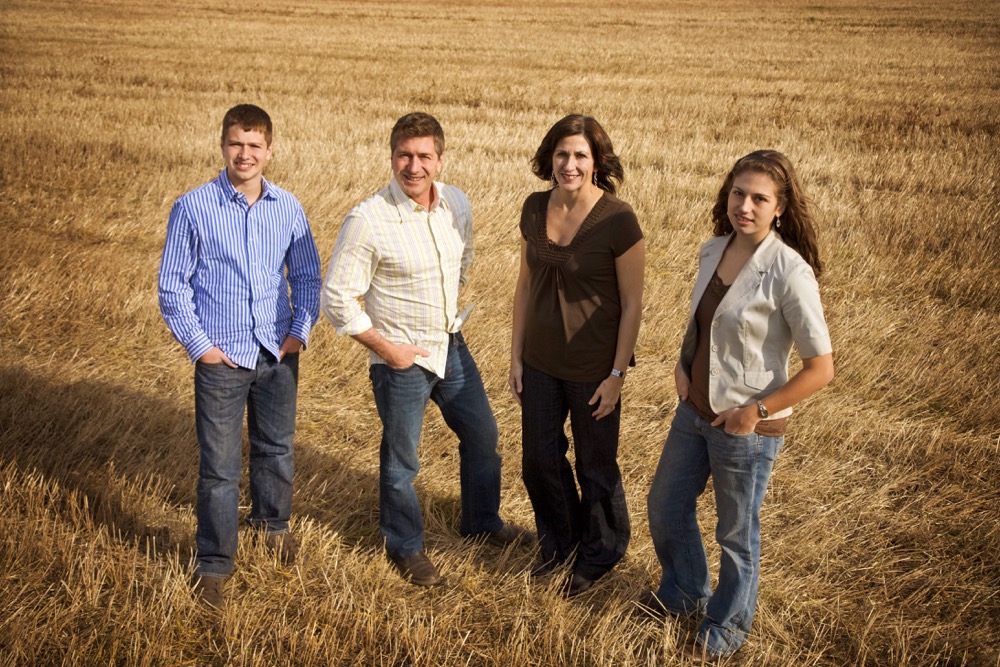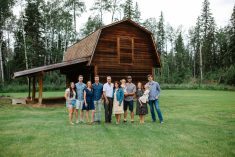Sure, some of the dollars are bigger. Sometimes much, much bigger. And some of the emotions around the succession table are bigger too, possibly bigger than the farm may ever have seen. Even so, when business advisor Rob Foster sits down with new clients to start discussions about farm succession, he still begins the same way.
Foster tells the family to take everything everyone has recently read or heard about succession and just put it off to the side.
Then he pauses, and explains.
Read Also

What to consider when setting up farm-related business ventures
Things to consider before launching a farm-adjacent side business.
“If you can tell me your dream,” says Foster, “we have a lot of tools to get there.”
Foster, a partner in Graham Scott Enns chartered accountants in St. Thomas, just south of London, Ont., says too often clients come to him convinced they’ll never be able to achieve their dream. Between taxes and incorporation rules and considerations of every kind, it just can’t happen, they’re sure. So why even bring it up? Even talking about it would be such a sore reminder of what they can’t have, and such a waste of time.
“They don’t even tell their accountant or succession planner that that’s what they’d like to do,” Foster has found. “They’ve already put it out of their head. It’s not a possibility.”
Except they’re wrong.
Or, at least, they might be.
To Foster, this is a key reality about today’s succession planning — maybe THE key fundamental to the entire exercise. And the upshot is this: Odds, are, you’ll be able to achieve most of what you want. You really will be able to custom fit your succession agreement to your farm.
“Sometimes the client is right and there’s nothing we can do about it,” Foster agrees. “But the thing about intergenerational tax rules is, there’s a lot of flexibility and room for creativity.
“…As long as you’ve got a creative mind, you can likely get 85 to 90 per cent of the way to where you want to go.”
Having put that on the table, Foster, who also farms corn, soybeans and wheat with his father, then shifts his approach. He paints a scenario from 2004, just prior to the bull market that began to reshape North American agriculture in 2008, and he talks about the kind of succession that was typical at the time for a local farm family with two children, one wanting to farm and the second having other dreams.
In such a case, the farm might come up with a severed house for the non-farming child, valued at, say, $350,000. Then the land, worth $450,000 for 100 acres, would go to the farming child.
With a balance of numbers like that, the parents felt okay, Foster says. “There was a difference, but not that huge a difference.”
But, he asks, what did the parents really give each child?
After the transfer, the non-farming child could do as they wanted with the house, whether that’s living in it as a free house or selling it and spending or investing the proceeds.
But not the farming child. It was a different picture there. The farming child would have received what basically amounted to the potential to net an income of anywhere from minus $10,000 to plus $20,000 a year on those 100 acres.
“If they’re not selling it — if they’re keeping it and passing it on to the next generation — that’s what you’re giving them,” Foster says.
But what Foster wants us to see today is how this approach would play out in 2024, when the $850,000 that an equivalent house might be worth today looks paltry compared to farmland that might be worth $2.5 or $3 million, based on current southwestern Ontario values.
“There’s this huge gap,” Foster agrees. “But what are you giving each child?”
The non-farm child gets $850,000 to do with as they like. And the farm child — wait for it! — gets the right to earn anywhere from minus $10,000 to plus $20,000 a year.
“It hasn’t changed, that’s the weird thing,” Foster says. “The cash flow from that farm hasn’t changed that dramatically… When you think that the land isn’t going to be sold — it’s going to be passed on to the next generation — it doesn’t matter what the land value is. It’s never going to be realized. What you’re giving them is what that asset can produce, and that isn’t really changing very much.”
Making sense of it
Succession isn’t easy, and Foster doesn’t downplay the potential difficulties of setting the farm up to transition to the next generation with the goal of all of the children having a realistic shot at success.
What he is saying, though, is that in his experience, when it comes to transitioning the actual decision-making to the next generation, it’s about half of families that encounter some level of issues, either because of interpersonal clashes or because of emotions or disagreements.
That “half” can seem a big number, he agrees. But it isn’t necessarily, in his view, a big surprise. “Entrepreneurials tend to be very strong-willed, and not always the best teachers,” he explains.
Foster also knows that emotions around the succession table can be even higher with today’s land prices. On the one hand, the non-farming children are paying a lot more attention to what their siblings might be getting while, on the other, the farming children know there’s a world of difference between equity and cash flow. And the squeeze between the two sets of children can give rise to a lot of suffering for the parents.
In his practice, however, Foster’s main focus is on the building blocks of a plan, such as tax strategies and corporate structures as opposed to the struggle of setting up on-site management approaches and day-to-day relationships. And his target is to help the family develop tax-wise strategies that will facilitate ultimate success.
Still, he has a front row seat. “It’s definitely caused difficulties,” he says of the run-up in land prices, “and the biggest sufferers from the mental standpoint are the parents. They’re in this major struggle on how should I be treating my non-farming versus my farming children.”
So Foster circles back to his initial question. What should he be trying to solve for? Or, to put it the way he initially puts it to his clients, “In a perfect world, what is that perfect scenario you’d like to see?”
Then, the objective becomes to create a work-back from that end point. What barriers are there? And are those barriers permanent barriers or are they time-related or structure-related?
So, for instance, if the non-farming child says that giving the land to the farming child could create a windfall if the farming child decides to sell, the process focuses on tools that could potentially address that. In a corporate environment, for instance, there can be options to do a freeze and create preferred shares that would see equity distributed to the non-farming children if the farming child sells. Or in other situations, a mortgage might be set up that isn’t due until the property is sold. “If you know where you want to go, there are tools,” Foster says.
Or, there may be issues because pretty much all the land was vested in a 1980s-style corporation, and now it seems difficult to give different parcels to different children. But in such cases too, there can be solutions.
“A lot of complicated things may be happening, but with a good succession plan we have a lot of tools to address those complications,” Foster says.
Which is a good thing, because there are differing points of view. If the non-farming children look enviously at today’s equity values, the farming children may have long felt that the non-farming children have always had a good deal — sometimes the better end of the deal.
The non-farming children got help with schooling and getting established, often in successful city careers, and on the face of it, they did fare better, pulling down big salaries while the farming child took half that much or less as a personal draw in order to keep investing in a farm that they still didn’t own.
That said, there’s increasing recognition that, in the fair versus equal debate, an early-career transfer to the non-farming children can have a major lifetime effect. And, more of the farming children in the families Foster works with see it as reasonable that, if they are inheriting a thriving farm corporation, they should look at taking on debt on behalf of the non-farming children in order to make the transition work.
“I haven’t run into a lot of situations where they don’t realize that,” Foster says.
Family still means a lot. That much hasn’t changed.
















